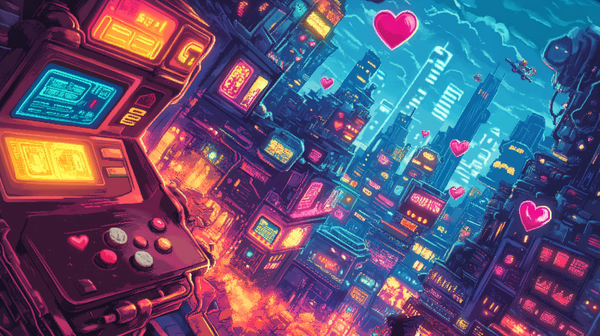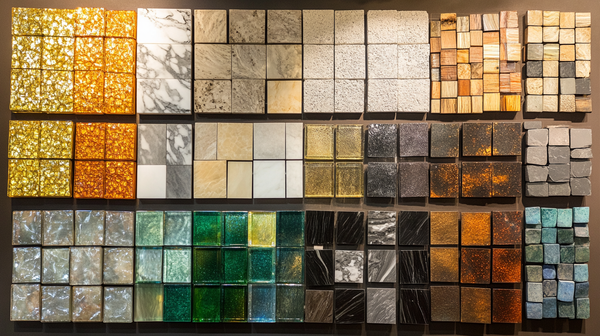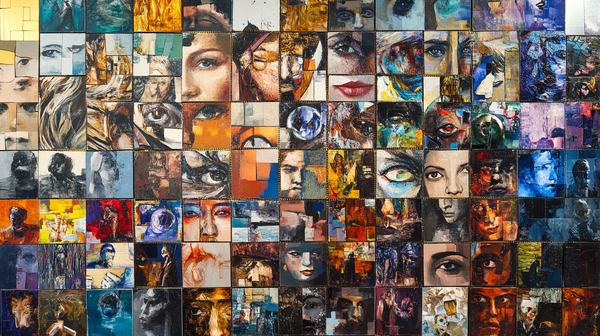10 Secrets about Midjourney angles that will transform your AI art
Discover 10 secrets to mastering angles and perspectives in Midjourney. Learn how to craft AI art prompts that transform your visuals into captivating works of art.

AI tools like Midjourney have unlocked endless possibilities for creators to experiment with stunning visuals. But what if you could take your creations to the next level by mastering angles and perspectives? Whether you're new to AI art or an experienced creator, understanding how to prompt Midjourney for specific camera angles can completely transform your images.
In this guide, we’ll uncover 10 secrets to mastering angles and perspectives in Midjourney, backed by examples, actionable prompts, and tips for stunning results.
Why Camera Angles Matter in AI Art
Camera angles aren’t just for photographers—they’re critical for storytelling in AI-generated visuals. The way your "camera" views a subject shapes the mood, focus, and narrative.
- Eye-Level: Neutral and relatable.
- High Angle: Makes subjects appear smaller or vulnerable.
- Low Angle: Creates dominance and power.
- Bird’s-Eye View: Offers scale and context.
- Worm’s-Eye View: Evokes awe and grandeur.
By integrating these angles into your prompts, you can evoke powerful emotions and bring depth to your AI art.
1. How to Craft Prompts for Eye-Level Shots
Eye-level shots are perfect for portraits or everyday scenes, creating relatability and balance.
Prompt Example:
"A serene portrait of an young supermodel with kind eyes, captured at eye level, glowing in soft morning light, detailed wrinkles, hyper-realistic style."

2. Add Drama with High Angles
High-angle shots add drama and vulnerability, making them perfect for emotional storytelling.
Prompt Example:
"A high-angle shot of a lone figure sitting at a library under neutral light, hunched shoulders, moody cinematic lighting, hyper-realistic style."

3. Create Power with Low Angles
Low angles are all about dominance and impact.
Prompt Example:
"A low-angle ground shot of a futuristic soldier, towering against a smoky battlefield in fire, with dramatic lighting and lens flare. Cinematic version, hyper-realistic style."
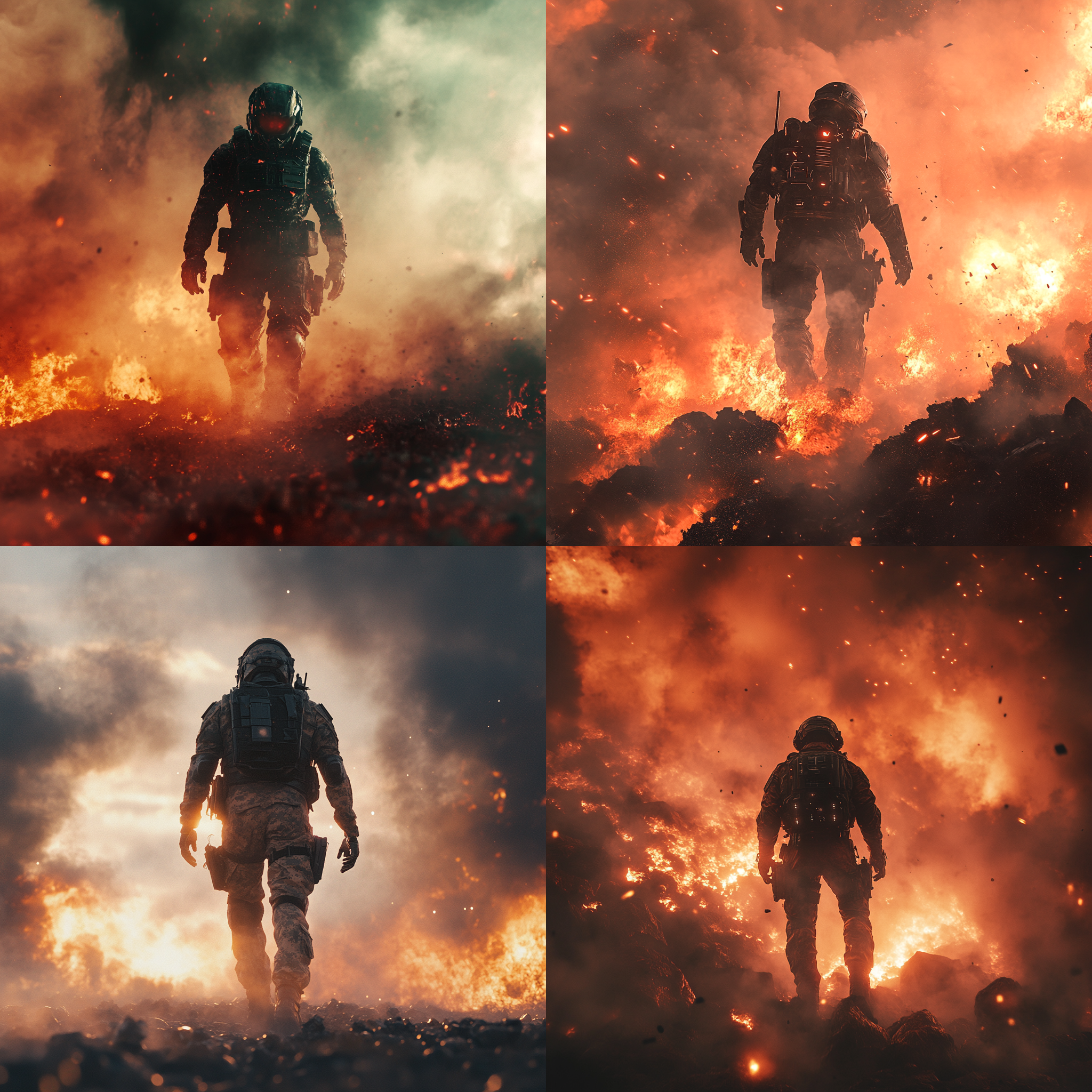
4. Use Bird’s-Eye View for Immersive Details
Bird’s-eye views let you capture expansive environments or intricate details from above.
Prompt Example:
"An aerial view of a bustling market square filled with vibrant stalls, crowds, and flowing fabrics, cinematic, hyper-realistic style, Canon 1Ds, 28mm"

5. Add Wonder with Worm’s-Eye View
Worm’s-eye views emphasize height and scale, creating a sense of awe.
Prompt Example:
"A worm’s-eye view of skyscrapers piercing the sunset sky, glowing windows reflecting warm light, and birds flying overhead. Hyper-realistic style."
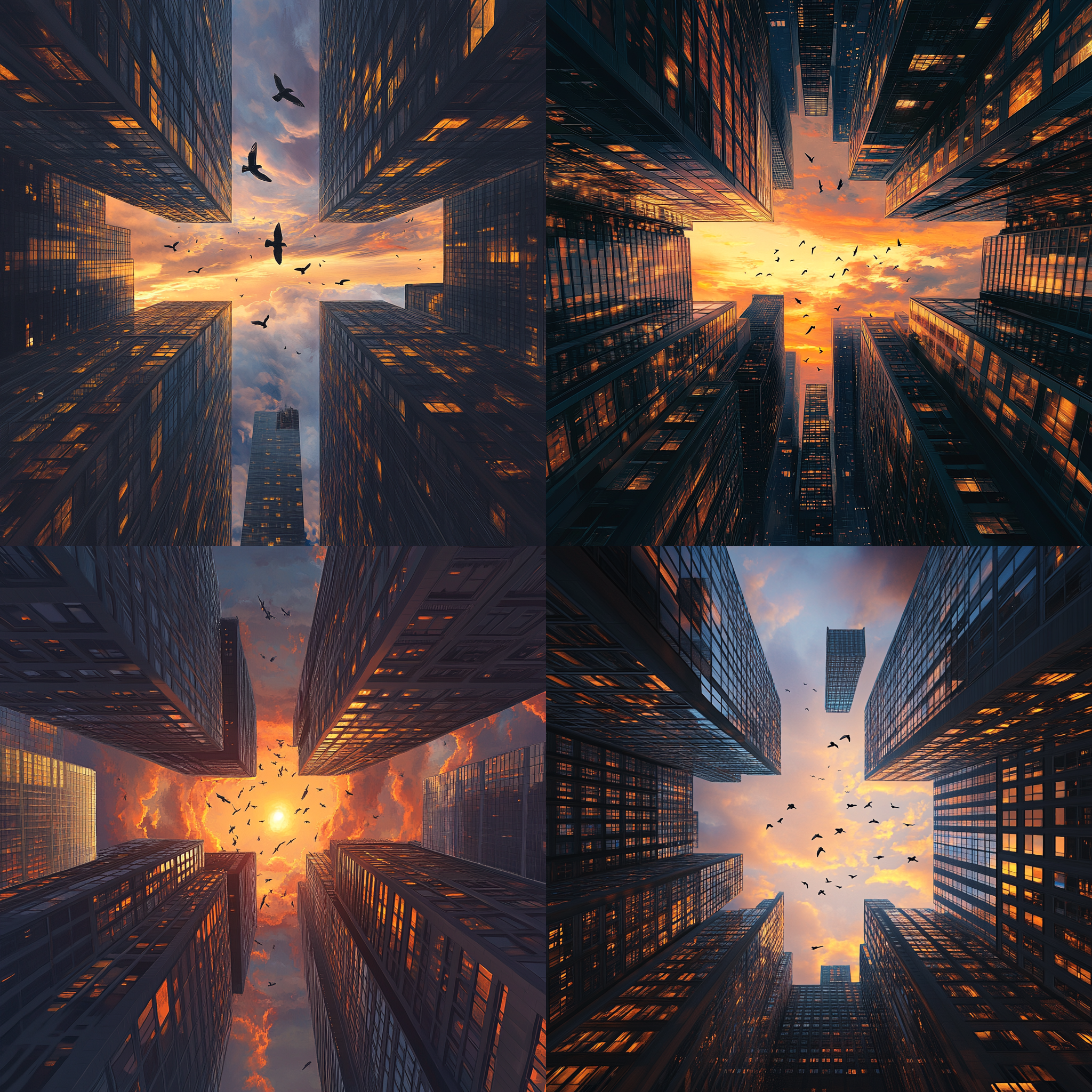
6. Combine Angles with Shot Types
Pair angles with close-ups, medium shots, or wide shots for layered storytelling.
- Close-Up + Low Angle: Emphasize a subject’s intensity.
Example: "Close-up low-angle shot of a roaring lion under golden sunlight. Hyper-realistic style."
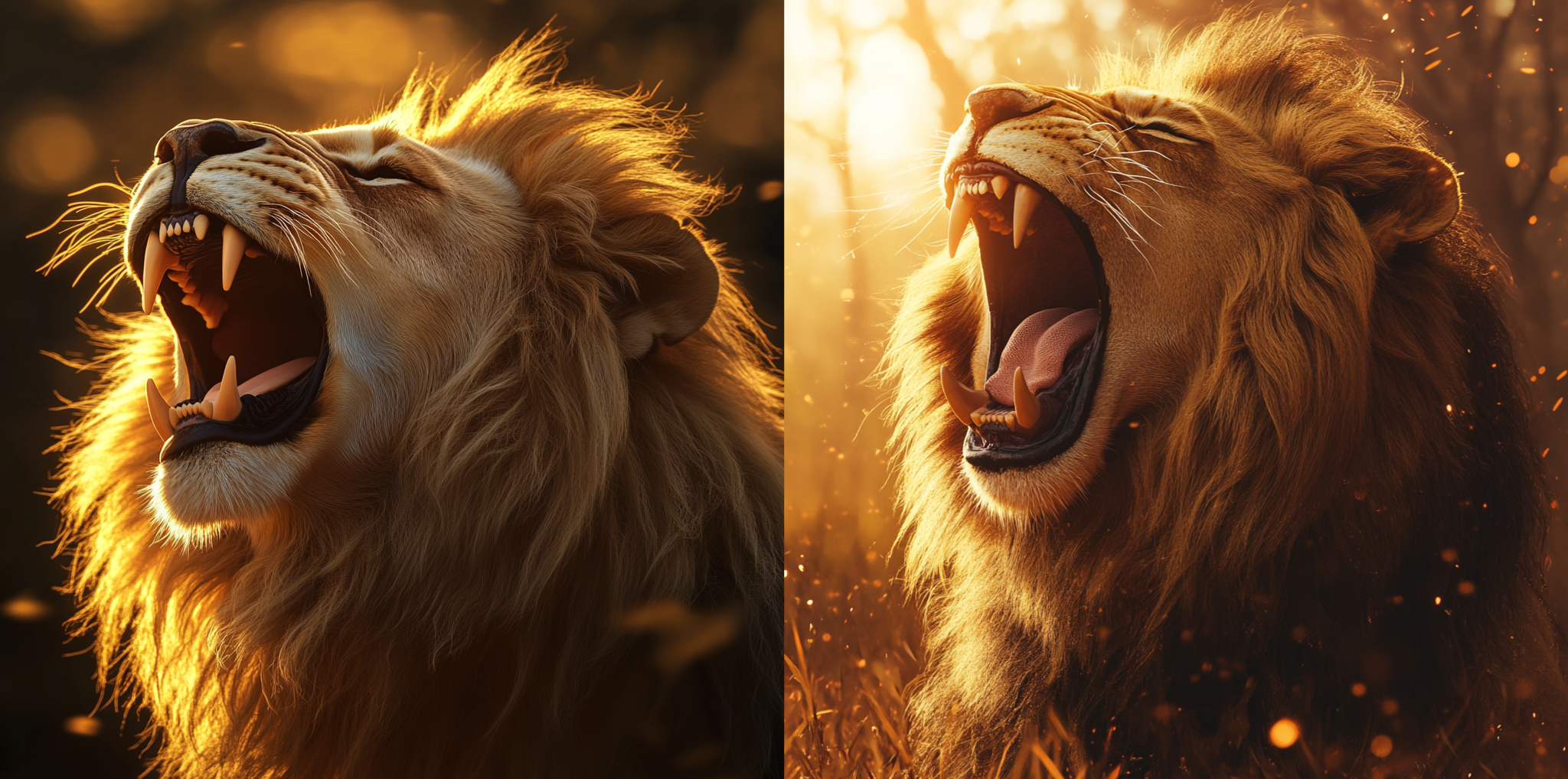
- Wide Shot + Bird’s-Eye View: Add scale and context.
Example: "Wide aerial shot of a roaring lion under golden sunlight. Hyper-realistic style. "
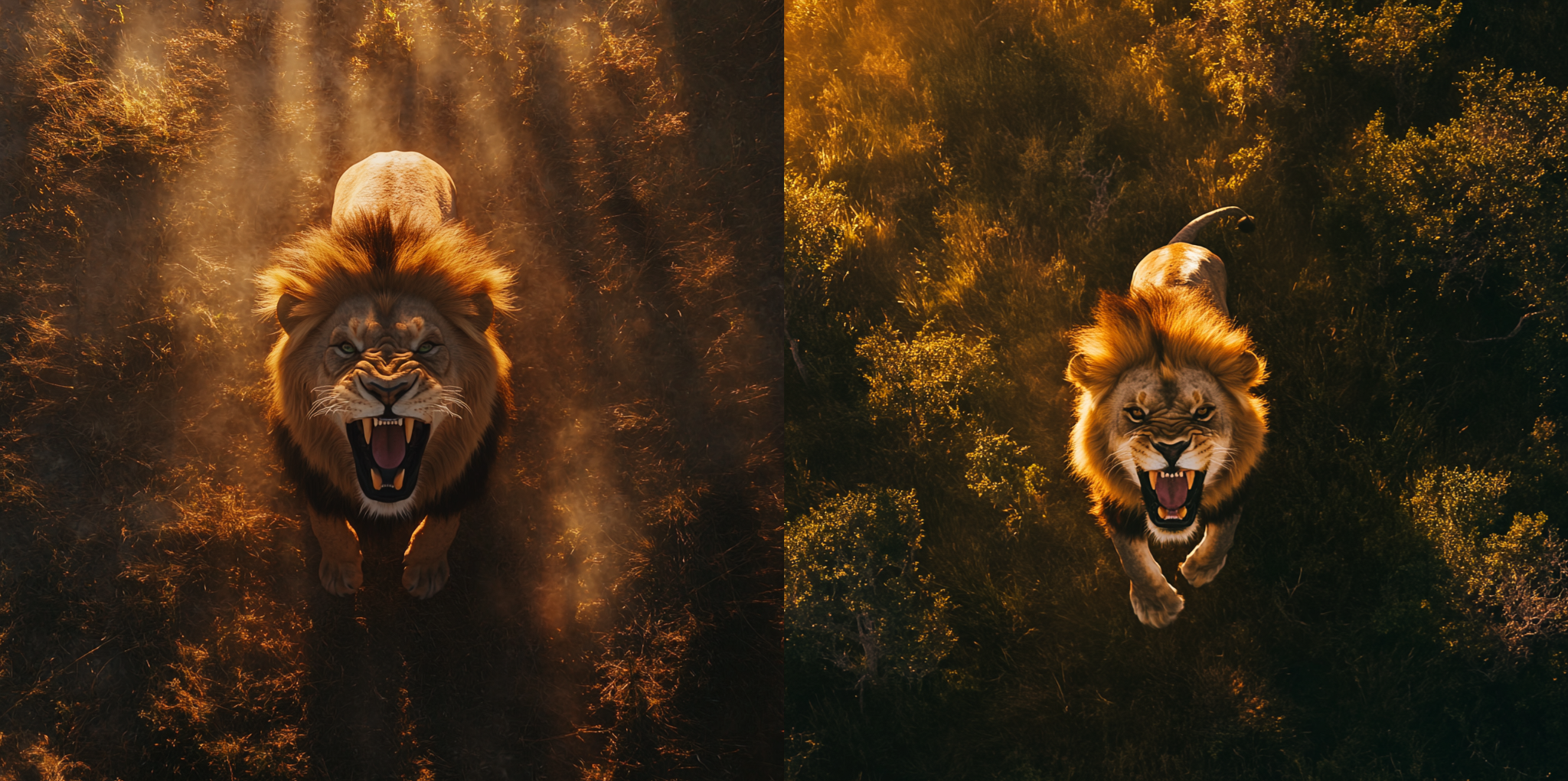
7. Leverage Specific Lenses
Mentioning lenses in your prompts can refine the look and feel of your images.
- Long Shot Lens: Exaggerates depth and detail.
Prompt: "Long zoom, a futuristic city, focus on person sitting in the office. Hyper-realistic style."
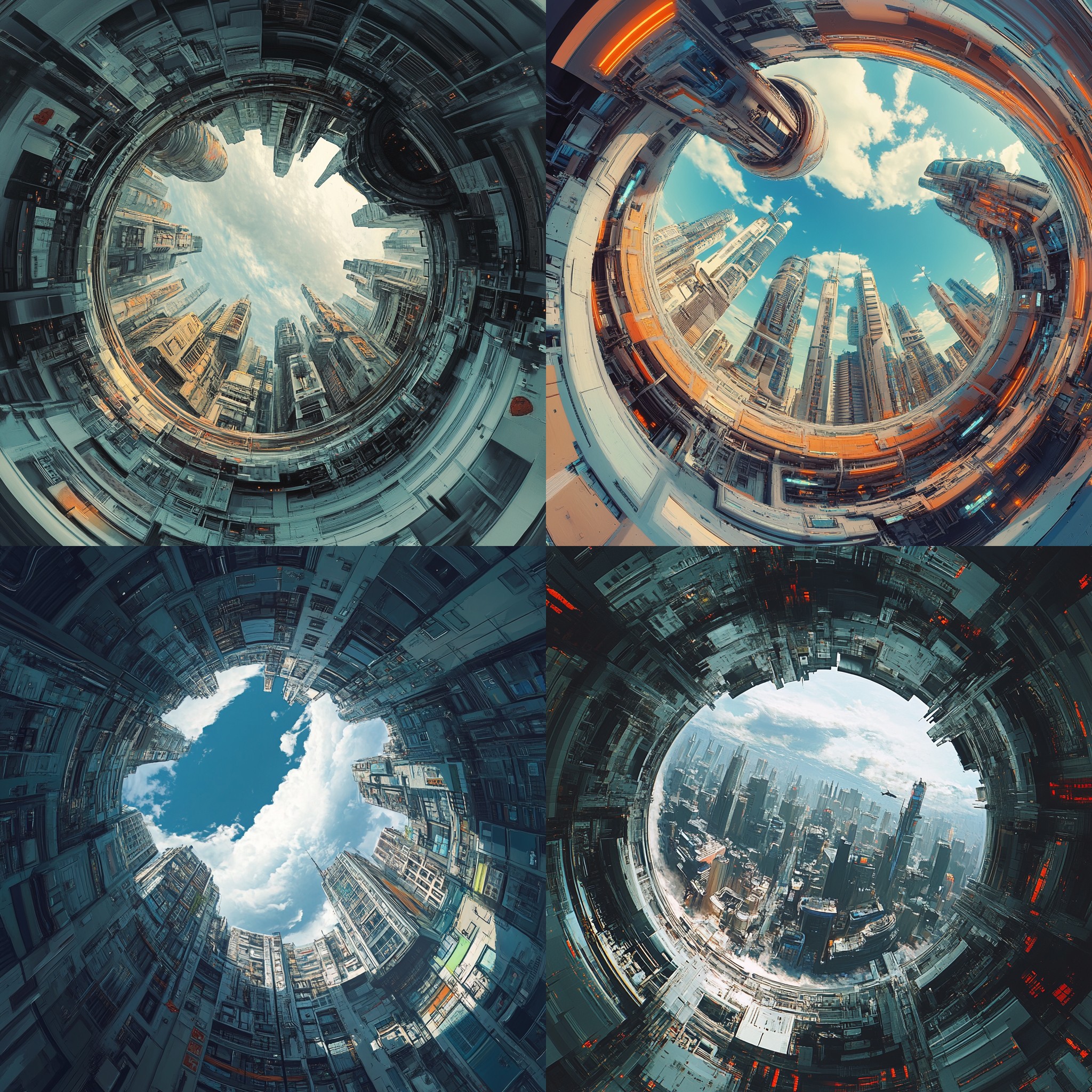
- Fisheye Lens: Adds a surreal, distorted effect.
Prompt: "Fisheye view of a futuristic city, with buildings curving dramatically into the sky."
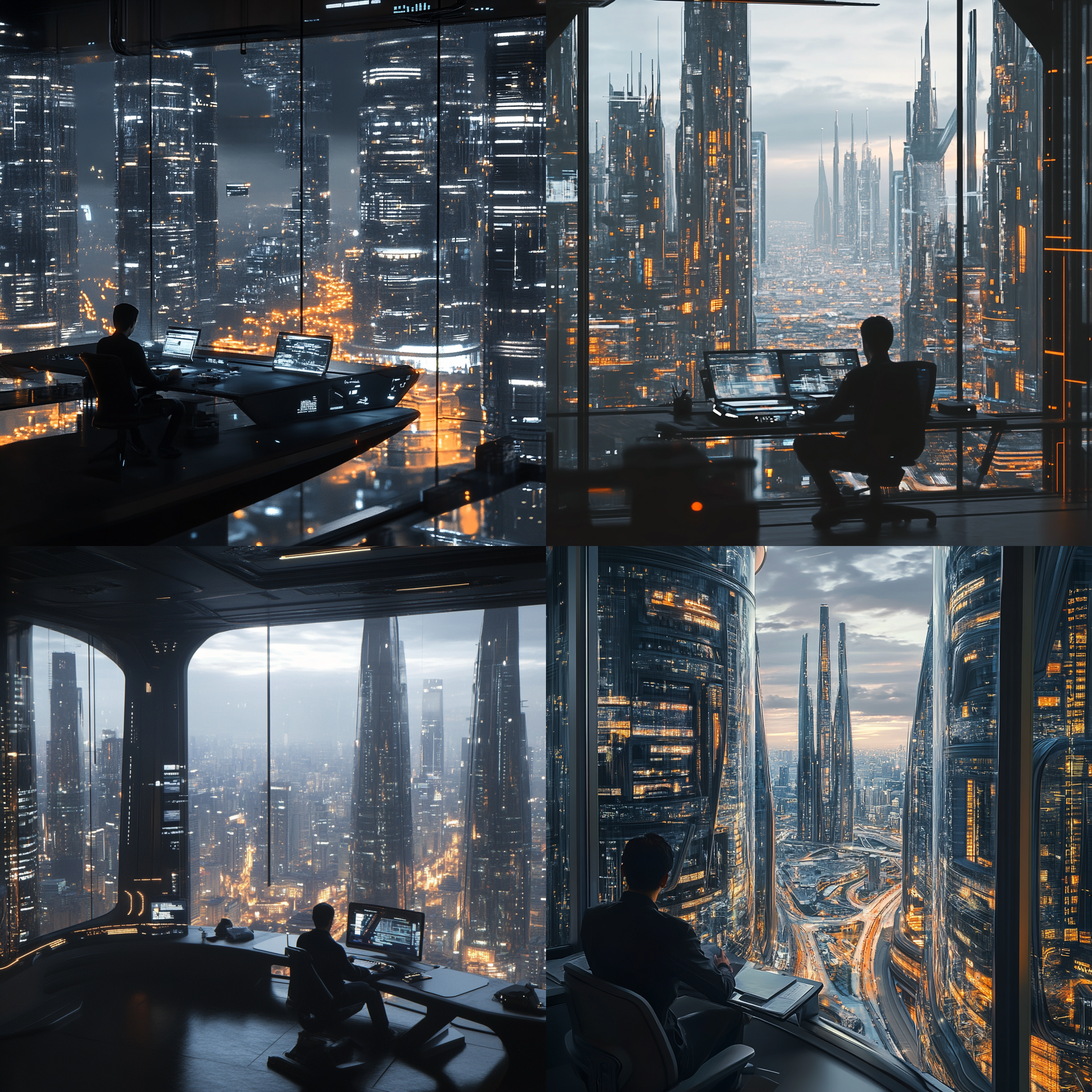
8. Use Cinematic Language for Dynamic Shots
Cinematic terms elevate your prompts by mimicking film techniques.
Example:
"A low wide angle shot of a detective silhouetted against a 17th century historical rainy cityscape, moody film Agatha Christie movie style. "

9. Enhance Prompts with Mood and Atmosphere
Don’t stop at angles—combine them with mood descriptors for depth.
Prompt Example:
"A low-angle shot of a haunted castle under a thunderstorm, glowing windows, pack of hungry wolves sitting on the ground, H.P. Lovecraft horror style."

10. Create Striking Contrast with Duotone Shots
Duotone shots combine two contrasting colors to create bold, modern visuals that emphasize mood and focus. This style is ideal for minimalist compositions or futuristic designs.
Prompt Example:
"A low-angle shot of a futuristic cityscape, bathed in duotone shades of neon pink and electric blue, glowing reflections on a wet pavement, cyberpunk atmosphere."
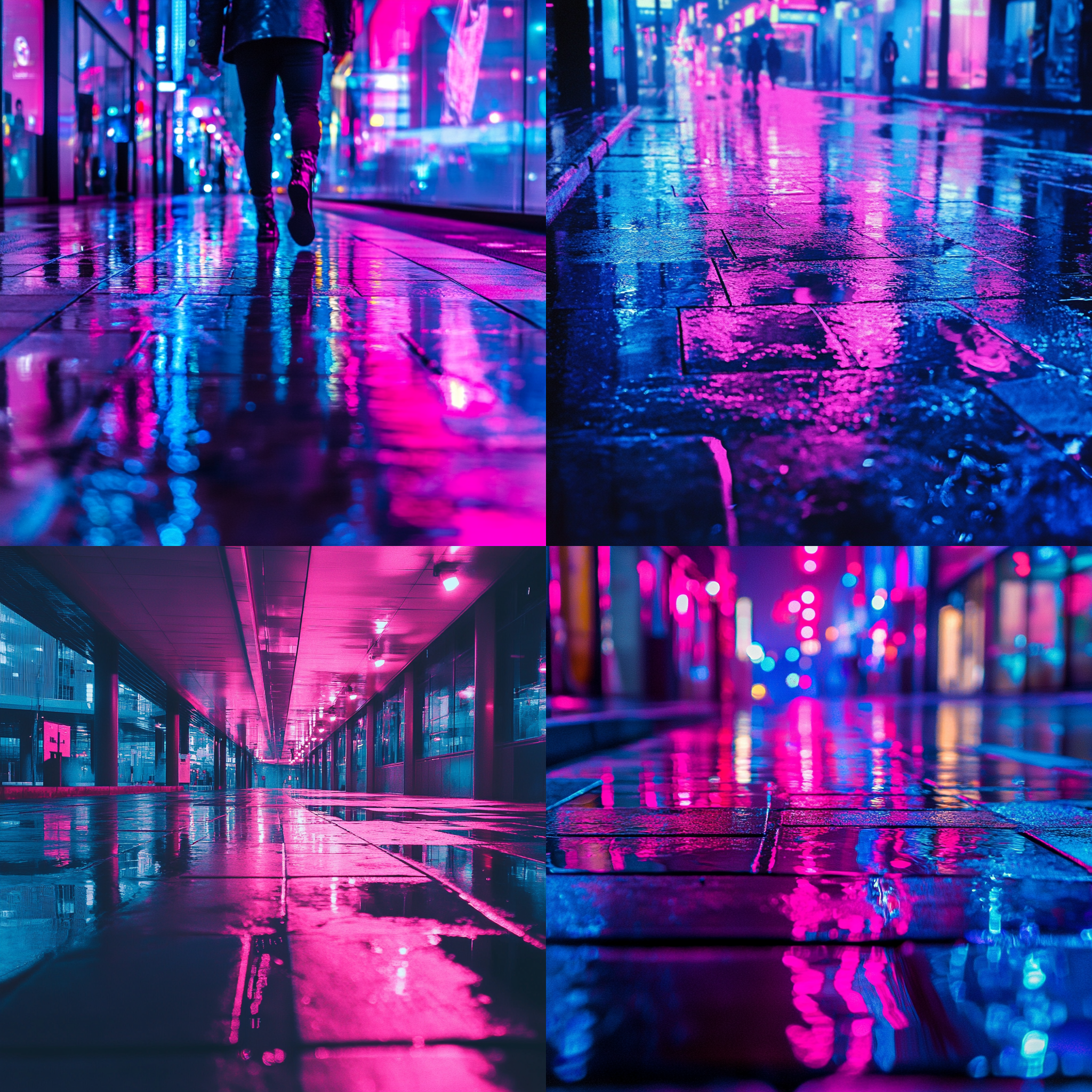
FAQs About Midjourney Angles
Q: Can I use multiple angles in one prompt?
Yes, but be clear in your description. For example: "A low-angle shot of a futuristic cityscape, with a bird’s-eye view of a market in the foreground."
Q: How do I troubleshoot unclear angles?
Add explicit terms like "looking up from the ground" or "viewed from above" to clarify.
Interactive Challenge
Challenge: Use one of the prompts in this post to create an image in Midjourney. Post your results in the comments or share your favorite angles with us!
Bonus: Combine two angles in a single prompt and see how Midjourney interprets it.
Conclusion
Angles and perspectives are the secret sauce for creating captivating AI art. By mastering how to prompt Midjourney for specific angles and combining them with other elements, you can elevate your images to professional-level artistry.
Bookmark this guide, experiment with the prompts, and let your creativity soar!


